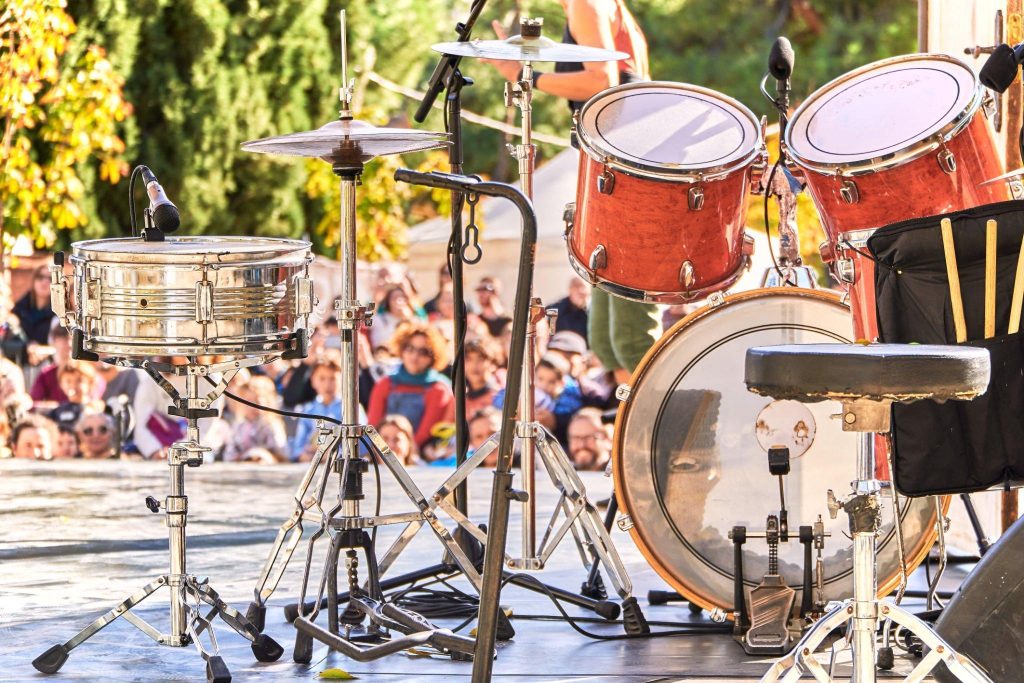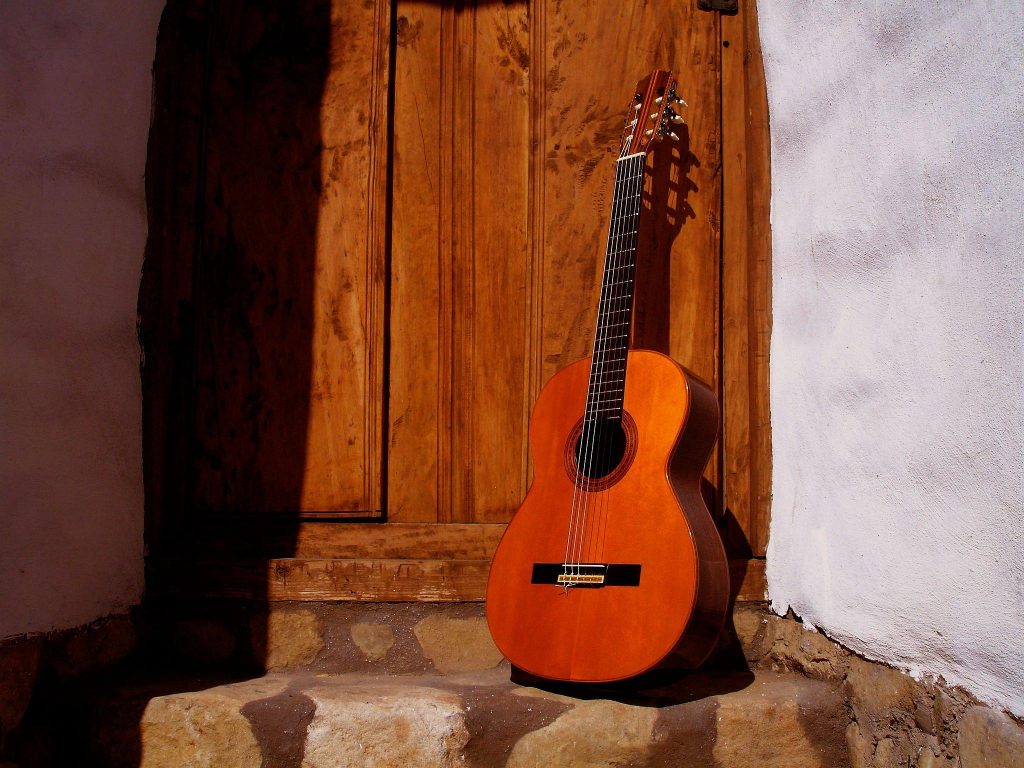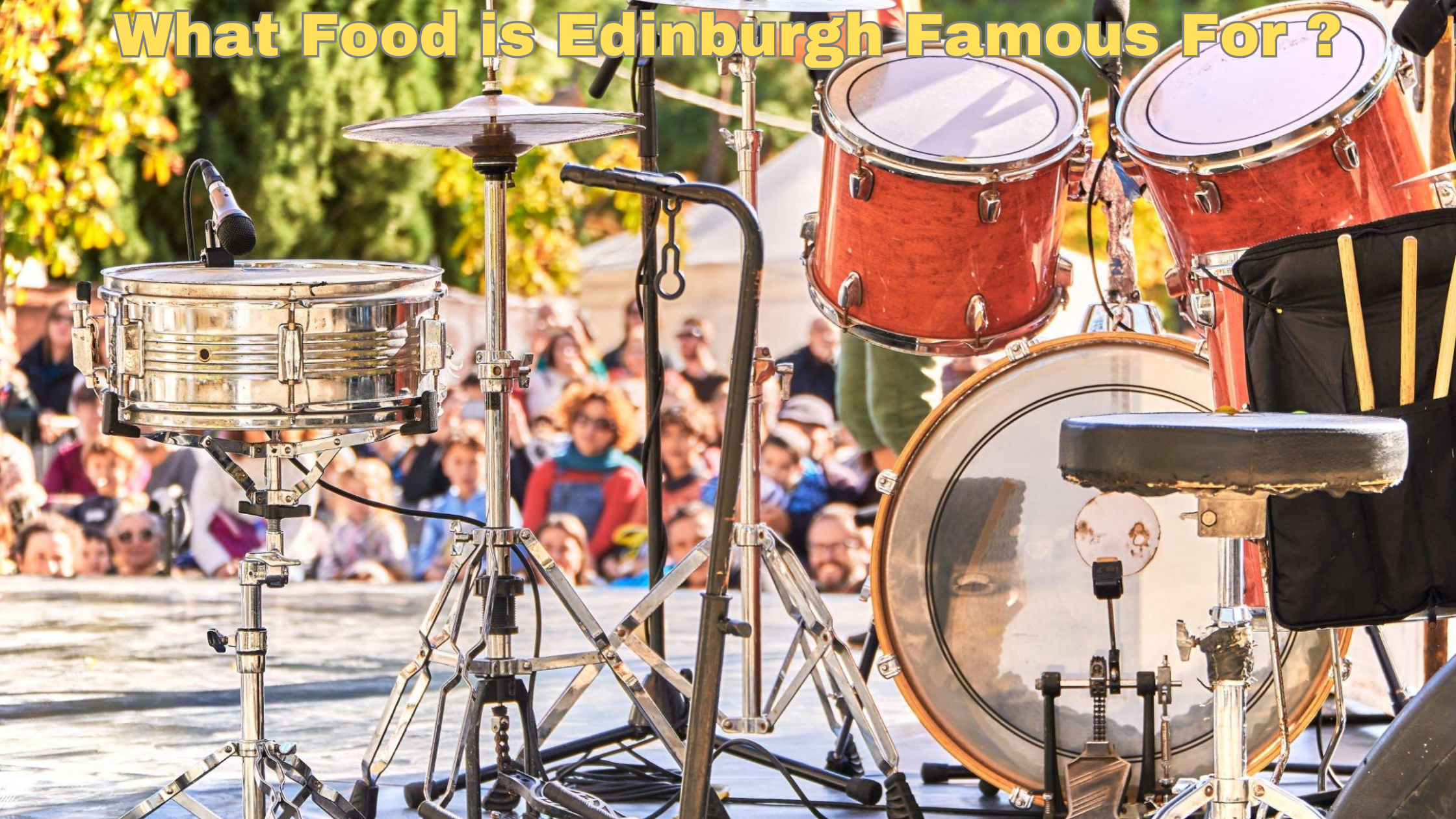
Spain’s musical heritage is as diverse as its landscapes, reflecting a tapestry of cultures, history, and traditions. From the energetic rhythms of flamenco to the graceful melodies of classical guitar, Spanish music has a magnetic allure that draws music enthusiasts from around the world.
In this article, we’ll explore the captivating music styles that have defined Spain’s musical identity and continue to resonate with audiences far and wide.
Spain, a vibrant and culturally rich nation nestled in the heart of the Iberian Peninsula, has gifted the world with an unparalleled musical heritage that resonates with passion, diversity, and an unmistakable rhythmic allure.
Renowned for its distinctive musical styles, Spain has captured the imagination of global audiences and left an indelible mark on the history of music.
When one thinks of Spanish music, the mind conjures images of bustling Flamenco dancers, their fiery footwork matching the intensity of the accompanying guitar melodies. Flamenco, perhaps the most iconic of Spain’s musical exports, encapsulates the country’s soul and emotional depth.
If you’re curious about the unique cultural elements that define regions in the United States, explore Utah’s distinctive reputation. This page on Tales of Travelers titled Utah’s Distinctive Reputation delves into the state’s rich history, natural beauty, and cultural significance, offering a fascinating journey through what Utah is known for.
Its origins, deeply rooted in the Andalusian region, showcase a fusion of Romani, Moorish, and Spanish cultural influences, creating a visceral and deeply authentic art form that transcends borders.
But Spain’s musical landscape extends far beyond Flamenco’s passionate rhythms. The enchanting melodies of Spanish classical guitar compositions by masters like Andrés Segovia and Paco de Lucía have captivated audiences with their intricate fingerpicking techniques and emotive storytelling.
Furthermore, Spain’s regional diversity is mirrored in its musical tapestry, with distinct styles like the lively Jota of Aragon, the soul-stirring Sardana of Catalonia, and the festive Sevillanas of Seville, each celebrating local traditions while contributing to the nation’s rich musical mosaic.
Contents
- 1 The Rich Tapestry of Spanish Music
- 2 Flamenco: The Heartbeat of Spain
- 3 Classical Guitar: Strings of Elegance
- 4 Traditional Spanish Folk Music: A Cultural Mosaic
- 5 Reggaeton and Latin Influences: Modern Spanish Music
- 6 Festivals and Celebrations
- 7 The Global Impact of Spanish Music
- 8 Spanish Classical Guitar:
- 9 Spanish Folk Music:
- 10 Conclusion
The Rich Tapestry of Spanish Music
Spanish music is a reflection of the country’s complex history and multicultural influences. The unique blend of Moorish, Jewish, and Gypsy cultures has given rise to a musical landscape that is both soulful and spirited. Whether you’re strolling through the cobblestone streets of Seville or basking in the sun-drenched beaches of Barcelona, the melodies of Spain are never far away.
Just as Spain’s music reflects its cultural richness, consider exploring Oklahoma’s fame to uncover the unique attractions and experiences that define the state.
Music has always been an integral part of human culture, reflecting the diverse emotions, traditions, and histories of societies across the globe. Among the many vibrant and captivating musical traditions, Spanish music stands out as a rich tapestry woven from a myriad of influences, genres, and regional variations.
From the passionate rhythms of flamenco to the melodic expressions of classical compositions, Spanish music is a testament to the country’s vibrant cultural heritage.
Flamenco: The Heartbeat of Spain
Bold, passionate, and brimming with emotion, flamenco is perhaps the most iconic of all Spanish music styles. Originating in the Andalusian region, flamenco is characterized by its soul-stirring vocals, intricate guitar work, and rhythmic handclaps. It’s more than just music; it’s a raw expression of the human experience, capturing feelings of love, longing, and resilience.
Spain, a country renowned for its vibrant culture, rich history, and diverse traditions, holds a cultural gem that resonates deep within the soul of its people and captivates the hearts of those who witness it. This gem is none other than flamenco, the passionate and emotive art form that is often described as “the heartbeat of Spain.” For nature enthusiasts seeking a well-rounded Spanish experience, explore the natural wonders intertwined with this cultural phenomenon on our page about Blackpool’s natural beauty.
Flamenco’s origins are shrouded in mystery, but its roots can be traced back to the Andalusian region of Spain, particularly in the cities of Seville, Jerez de la Frontera, and Cadiz. It is a blend of various cultural influences, including Romani, Moorish, Jewish, and Spanish Gypsy traditions, all coming together in a unique fusion of music, dance, and song.
Classical Guitar: Strings of Elegance

The classical guitar holds a special place in Spain’s musical legacy. With origins dating back to the Renaissance, this instrument has evolved to become a symbol of elegance and sophistication.
Masters like Andrés Segovia have elevated the classical guitar to new heights, enchanting audiences with intricate fingerpicking and enchanting melodies that evoke the beauty of Spain’s landscapes.
The classical guitar is a timeless instrument that embodies both grace and sophistication. Its delicate yet powerful sound has captivated audiences for centuries, transcending cultural boundaries and leaving a lasting impression on listeners.
In this article, we delve into the world of classical guitar, exploring its rich history, distinctive characteristics, and the allure that has earned it the title of “Strings of Elegance.”
The roots of the classical guitar can be traced back to the ancient civilizations of Egypt, Mesopotamia, and Greece. However, it was during the Renaissance and Baroque periods that the instrument truly began to flourish, evolving into the form we recognize today.
If you’re interested in delving further into the history of musical instruments and their cultural significance, you might want to explore the fascinating world of Presidential history. This page provides valuable insights into various aspects of history, including the musical heritage associated with different time periods.
Renowned composers like Fernando Sor, Mauro Giuliani, and Francisco Tárrega contributed significantly to its repertoire, establishing a foundation for classical guitar music that continues to be revered.
Traditional Spanish Folk Music: A Cultural Mosaic
In Spain, a country renowned for its rich and diverse history, you’ll find a cultural tapestry meticulously woven from the threads of various civilizations and traditions. Among the many captivating aspects of Spanish culture, none is more enchanting than its traditional folk music. This melodious art form serves as a resonant embodiment of the country’s distinctive blend of influences.
If you’re interested in exploring the cultural riches of various regions, you might also want to delve into the fascinating distinctions of Texas, which boasts its own unique heritage. For an in-depth look at what Texas is known for, read “Unveiling Texas’ Distinctions” on TalesofTravelers.com
From the lively rhythms of Andalusia to the haunting melodies of Galicia, Spanish folk music reflects the multifaceted heritage that has shaped the nation. In this article, we delve into the vibrant world of traditional Spanish folk music, exploring its regional variations, historical significance, and enduring resonance in the modern era.
Spain’s geographical diversity has given rise to an array of regional folk music styles, each deeply rooted in local customs and history.
The Flamenco of Andalusia, renowned worldwide for its passionate rhythms and soulful singing, reflects the amalgamation of Moorish, Jewish, and Romani influences. Moving north to Catalonia, the Sardana dance and its accompanying music celebrate community and unity, embodying the spirit of the region.
In Galicia, the bagpipe-driven melodies of the Muñeira evoke the rugged landscapes and Celtic heritage of the area. These are just a few examples of the vast array of musical traditions that paint a vivid picture of Spain’s diverse cultural landscape.
Reggaeton and Latin Influences: Modern Spanish Music
In recent years, the global music landscape has witnessed an undeniable surge in the popularity of reggaeton and Latin-infused sounds, and Spanish music has played a pivotal role in this melodious revolution.
The fusion of traditional Spanish rhythms with contemporary beats, coupled with the infectious energy of reggaeton, has given rise to a new era of modern Spanish music that captivates audiences worldwide.
This article delves into the captivating journey of how reggaeton and Latin influences have reshaped the Spanish music scene, creating a harmonious blend of tradition and innovation.
Reggaeton, a genre born in the neighborhoods of Puerto Rico, has transcended its origins to become a global phenomenon, and Spain has embraced it wholeheartedly.
The distinctive blend of dancehall, hip-hop, and Latin rhythms has found a natural home in Spain’s musical heritage, resulting in a unique genre often referred to as “Spanish reggaeton.” If you’re interested in exploring other cultural crossovers and signatures, you should definitely check out “Washington State’s Signatures” to discover what Washington is known for.
Artists like Daddy Yankee, Ozuna, and Bad Bunny have been instrumental in popularizing this fusion, seamlessly weaving Spanish lyrics into reggaeton’s infectious beats.
Festivals and Celebrations

In Spain, festivals and celebrations are deeply woven into the vibrant tapestry of its cultural identity. With a rich history and diverse regions, the country boasts a calendar brimming with captivating festivities that embody its unique heritage.
From the exuberant “La Tomatina” tomato-throwing fiesta in Buñol to the electrifying “Running of the Bulls” during the San Fermín festival in Pamplona, Spain’s festive spirit is unrivaled.
The flamboyant Flamenco performances, rhythmic and passionate, capture the essence of Spanish culture, often taking center stage at celebrations. Each city and town showcases its distinct traditions, like the colorful “Feria de Abril” in Seville and the hauntingly beautiful “Semana Santa” processions across the nation.
Spanish festivals are an embodiment of unity, where locals and visitors alike come together to revel in the nation’s soul-stirring music, delectable cuisine, and warm camaraderie, making each celebration a mesmerizing spectacle.
The Global Impact of Spanish Music
Spain’s musical influence extends far beyond its borders. Flamenco’s passionate rhythms have inspired musicians across genres, while artists like Enrique Iglesias and Rosalía have brought Spanish pop and urban music to a global audience. This cross-cultural exchange highlights Spain’s ability to resonate with people of diverse backgrounds.
Flamenco:
The Soulful Expression Flamenco, often considered the heartbeat of Spain’s musical culture, is renowned for its intense emotional expression and intricate guitar work. Rooted in Andalusian traditions, flamenco encompasses singing (cante), dancing (baile), and guitar playing (toque).
The music style is characterized by its passionate vocals, handclaps (palmas), and percussive footwork, all of which converge to create a raw and authentic experience.
Whether it’s the heart-wrenching “cante jondo” or the fiery “rumbas,” flamenco’s unique blend of sorrow and celebration makes it an enduring emblem of Spanish artistic heritage.
Spanish Classical Guitar:

The essence of Spanish classical music finds its most profound expression through the Spanish classical guitar, a tradition dating back to the 16th century. This musical style is characterized by its intricate fingerpicking techniques, soul-stirring melodies, and an unmistakable Iberian flair.
For those seeking to immerse themselves in the world of music, this instrument is a gateway to the rich tapestry of Spain’s cultural heritage. If you’re also looking to explore cultural treasures while enjoying Maine’s outdoor adventures, you can find inspiration in this guide to what Maine is known for, including its musical and recreational offerings.
The works of legendary composers like Francisco Tárrega and Isaac Albéniz have solidified the Spanish guitar’s reputation as an instrument capable of conveying a wide spectrum of emotions, from nostalgia to exuberance.
Pasodoble:
The Rhythmic Parade Derived from the Spanish military march, the pasodoble is a lively and spirited music style often associated with bullfighting and other festive occasions. Its name translates to “double step,” referencing the marching rhythm.
The pasodoble’s dynamic tempo, catchy melodies, and strong rhythmic patterns perfectly capture the essence of Spain’s celebratory spirit. This music style has also found its way into competitive ballroom dancing, further expanding its global influence.
Spanish Folk Music:

A Tapestry of Regional Sounds Spain’s diverse regions contribute their own unique flavors to the country’s folk music tapestry. From the bagpipes and drums of Galicia to the lively jotas of Aragón, each region boasts its own distinct instruments, melodies, and dance forms.
These folk styles offer a window into Spain’s regional cultures, reflecting the varied landscapes and histories that have shaped the country over centuries.
Latin and Salsa Influences:
Spain’s Danceable Rhythms Spain’s musical influence extends beyond its borders, particularly in the realm of Latin and salsa music. The country’s historical connections with Latin America have led to a fusion of Spanish and Latin rhythms, resulting in danceable tunes that capture the festive essence of both cultures.
The incorporation of Spanish guitar, flamenco elements, and passionate vocals adds a unique touch to the global Latin music scene.
Conclusion
Spain is a land deeply rooted in musical diversity, offering a rich tapestry of styles that resonate with both its history and culture. Flamenco remains the cornerstone, capturing the passion and vibrancy of the Spanish spirit in its intricate guitar melodies, percussive footwork, and soulful vocals.
Yet, Spain is not a one-note wonder. Genres like classical guitar, zarzuela, and even pop and hip-hop, enrich the country’s musical portfolio. From the traditional tunes that echo in Andalusian villages to the contemporary beats that fill Madrid’s nightclubs, Spanish music is an all-encompassing experience.
This melodic landscape is not just an art form; it’s Spain’s musical signature to the world, enticing music enthusiasts to dig deeper into its captivating rhythms and melodies.

